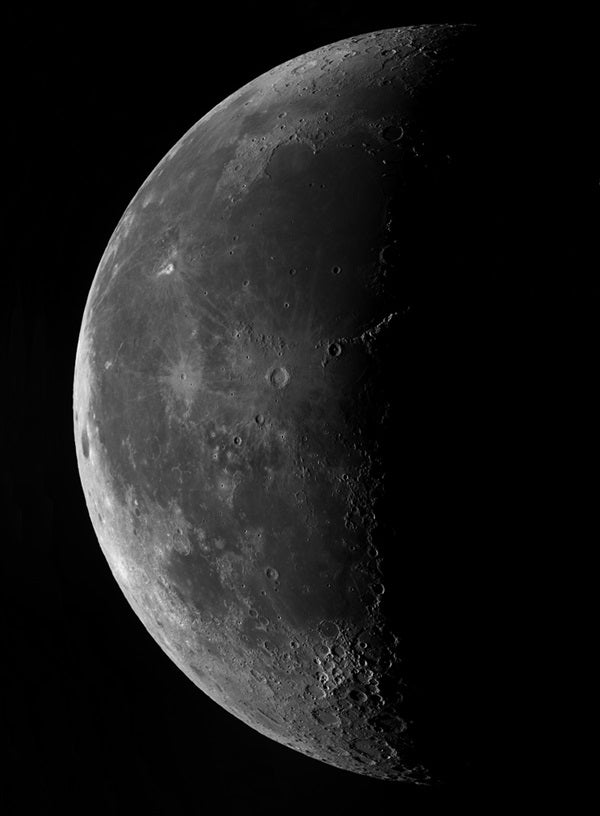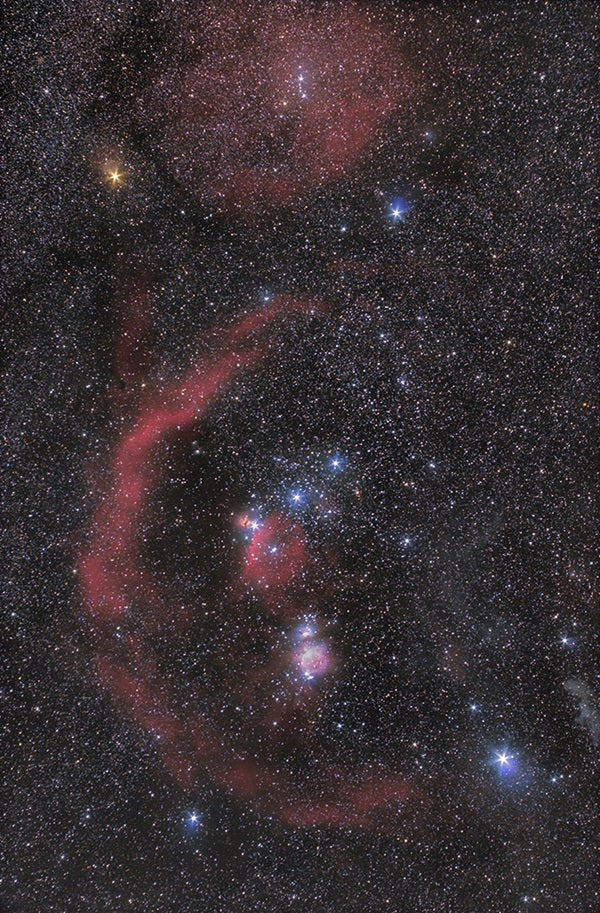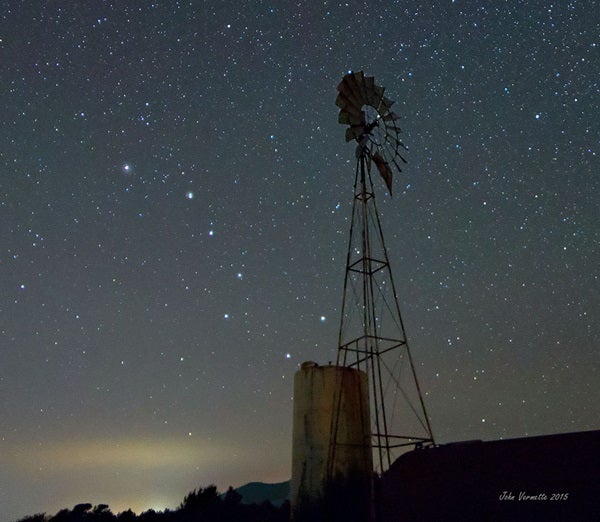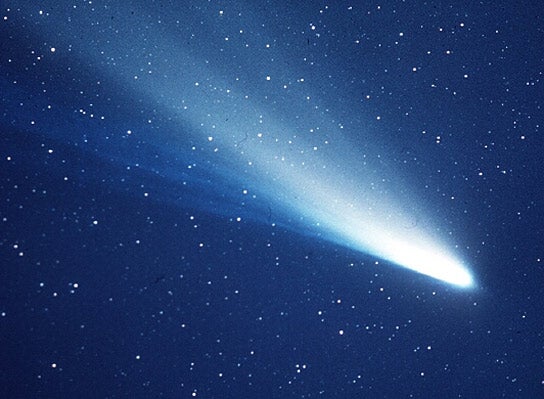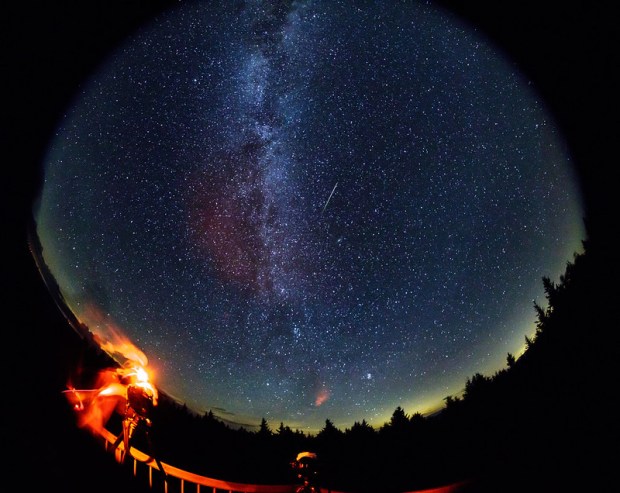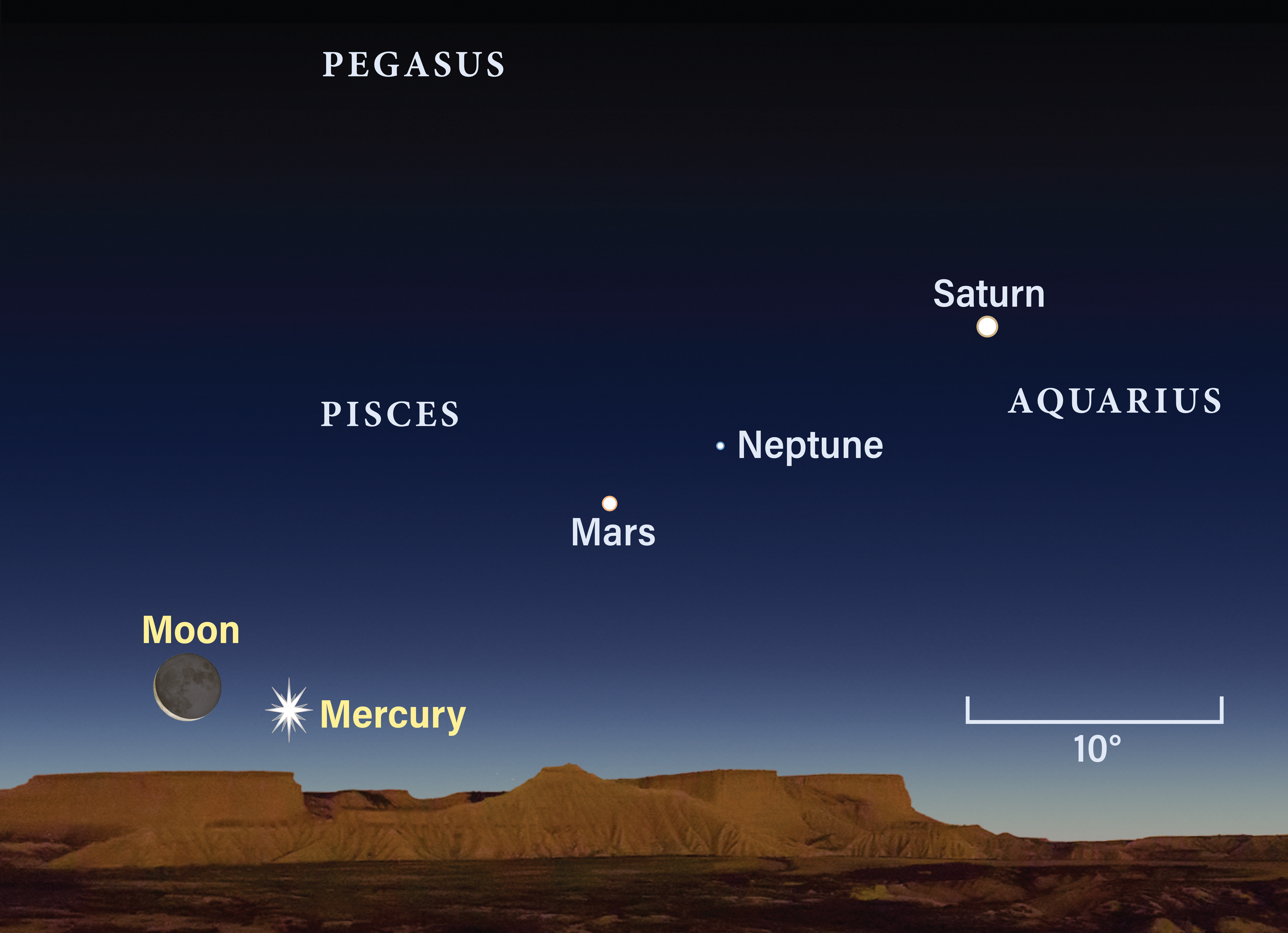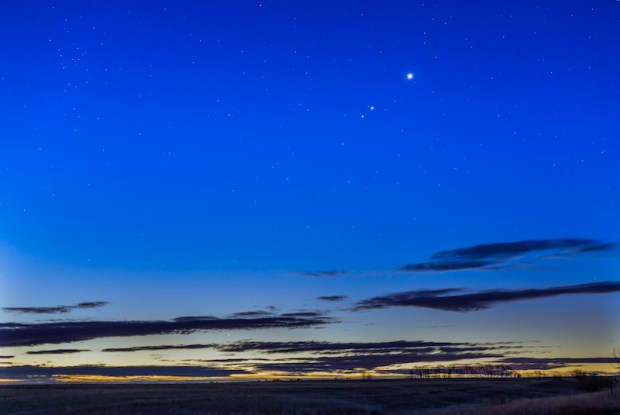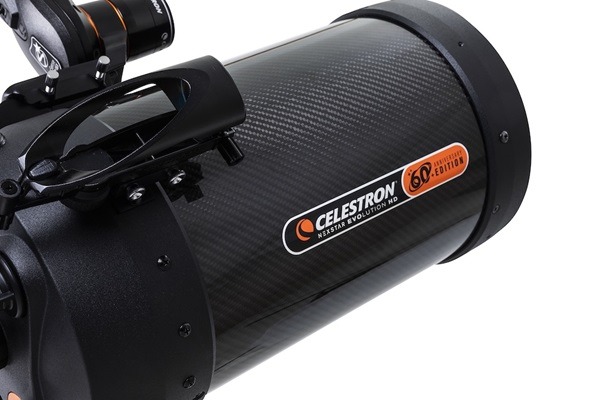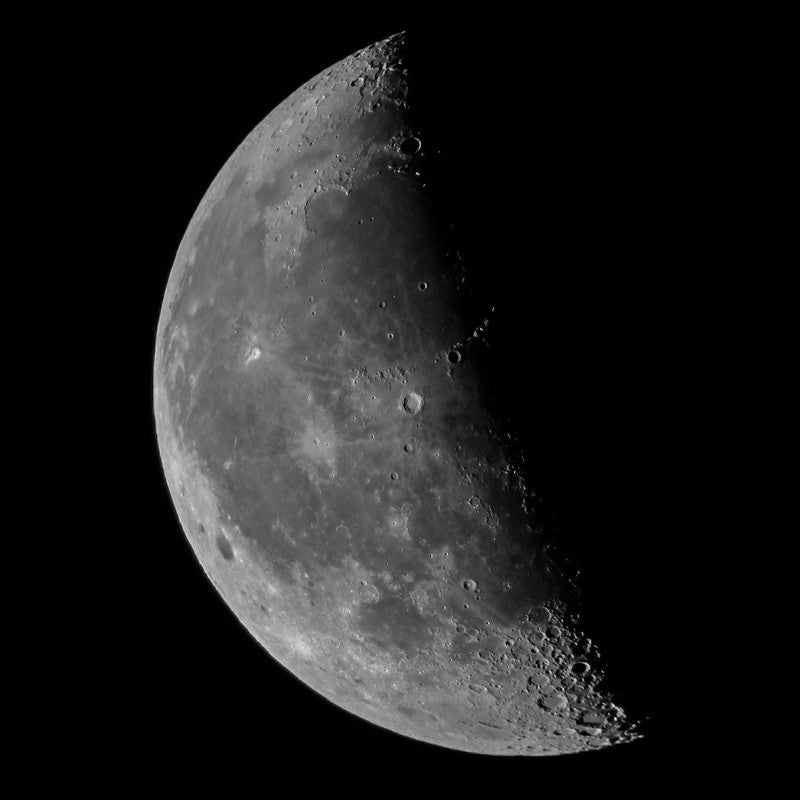Full Moon arrived at 7:12 a.m. EDT this morning, but it still looks completely illuminated tonight. It rises in the east about a half-hour after sunset and climbs well above the southeastern horizon by late evening. The Moon spends the evening in the northwestern corner of the constellation Libra the Scales.
Saturday, April 20
Venus pokes above the eastern horizon about an hour before sunrise. The brilliant planet dominates the predawn sky as the rosy glow heralding the Sun’s arrival grows brighter. Venus shines at magnitude –3.9, some four times brighter than the second-brightest planet, Jupiter. When viewed through a telescope, the inner world shows a disk that spans 12″ and appears 86 percent lit.
Sunday, April 21
Mars continues to add its ruby-red glow to Taurus the Bull this week. Shining at magnitude 1.6, the Red Planet appears slightly fainter than the constellation’s brightest star, ruddy 1st-magnitude Aldebaran. The planet lies nearly 30° above the western horizon an hour after sundown and doesn’t set until after 11 p.m. local daylight time.
Monday, April 22
The annual Lyrid meteor shower reaches its peak this morning. Unfortunately, the waning gibbous Moon shares the sky and will dramatically reduce the number of “shooting stars” you’ll see. The best views likely will come shortly before morning twilight commences. The Moon then hangs fairly low in the south and the constellation from which the meteors appear to radiate, Lyra, lies nearly overhead. If you face away from our satellite, you should see at least a few meteors. The only good news to come from this interference is that the Moon will wane to its New phase in two weeks when the Eta Aquariid meteor shower reaches its peak.
Uranus is in conjunction with the Sun at 7 p.m. EDT. From our earthly perspective, this means the distant planet lies behind the Sun and so is out of sight. Uranus will return to view in the morning sky in late May.
Tuesday, April 23
The waning gibbous Moon points the way to Jupiter this morning. The two rise shortly before midnight local daylight time, but they appear more prominent as they climb higher and edge closer before dawn. By the start of morning twilight, less than 2° separate the two. Of course, Jupiter is easy to find all week because it shines so brightly, at magnitude –2.4, against the faint backdrop of Ophiuchus. A telescope reveals the planet’s 43″-diameter disk and four bright moons.
It’s about time to grab your final evening views of Orion the Hunter. This bright constellation now lows low in the west as darkness falls and starts to set around 9:30 p.m. local daylight time. The three 2nd-magnitude stars that form the Hunter’s Belt now appear parallel to the horizon. A line through these stars and extended to the left points directly to the sky’s brightest star, Sirius.
Thursday, April 25
Two days after its close encounter with Jupiter, the waning gibbous Moon slides past Saturn this morning. The two objects rise around 1:30 a.m. local daylight time and climb 25° high in the east-southeast by the time twilight begins. Of course, Saturn is a treat all week long. The ringed planet shines at magnitude 0.5 and appears significantly brighter than any of the background stars in its host constellation, Sagittarius the Archer. A telescope shows the gas giant’s 17″-diameter disk and a spectacular ring system that spans 39″ and tilts 23° to our line of sight.
Friday, April 26
Last Quarter Moon occurs at 6:18 p.m. EDT. When it rises shortly before 3 a.m. local daylight time tomorrow morning, it will appear slightly less than half-lit. Earth’s only natural satellite appears against the faint background stars of Capricornus the Sea Goat.
Mars traverses the 6th-magnitude open star cluster NGC 1746 this evening. Because the cluster is big — its diameter is slightly larger than the Full Moon — you’ll want to use binoculars or a telescope at low power for the best views. Unfortunately, Mars appears only 4″ across and won’t show any detail.
Saturday, April 27
One of the spring sky’s finest deep-sky objects, the Beehive star cluster (M44) in the constellation Cancer the Crab, lies high in the southwest after darkness falls. The 3rd-magnitude cluster lies approximately 40 percent of the way from 1st-magnitude Pollux in Gemini to the similarly bright star Regulus in Leo. With the naked eye under a dark sky, you should be able to spot the Beehive as a faint cloud. But this star group explodes into dozens of stars through binoculars or a telescope at low power.
The Big Dipper’s familiar shape rides high in the northeast on April evenings. The spring sky’s finest binocular double star marks the bend of the Dipper’s handle. Mizar shines at 2nd magnitude, some six times brighter than its 4th-magnitude companion, Alcor. Even though these two are not physically related, they make a fine sight through binoculars. (People with good eyesight often can split the pair without optical aid.) A small telescope reveals Mizar itself as double — and these components do orbit each other.
The Moon reaches apogee, the farthest point in its orbit around Earth, at 2:20 p.m. EDT. It then lies 251,396 miles (404,582 kilometers) from Earth’s center.

